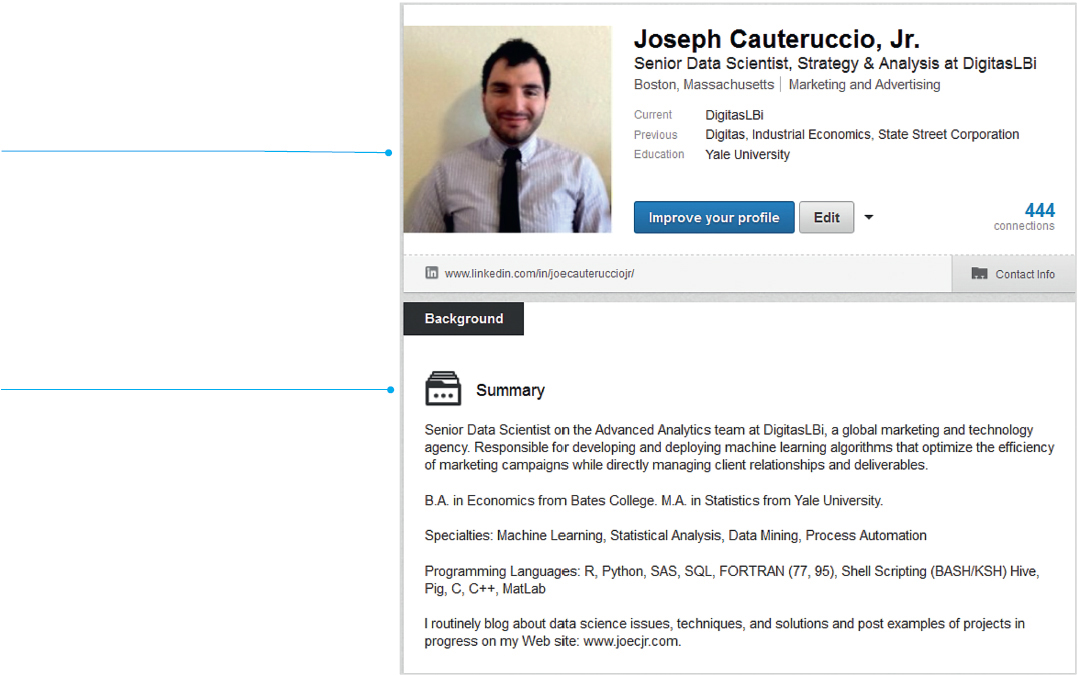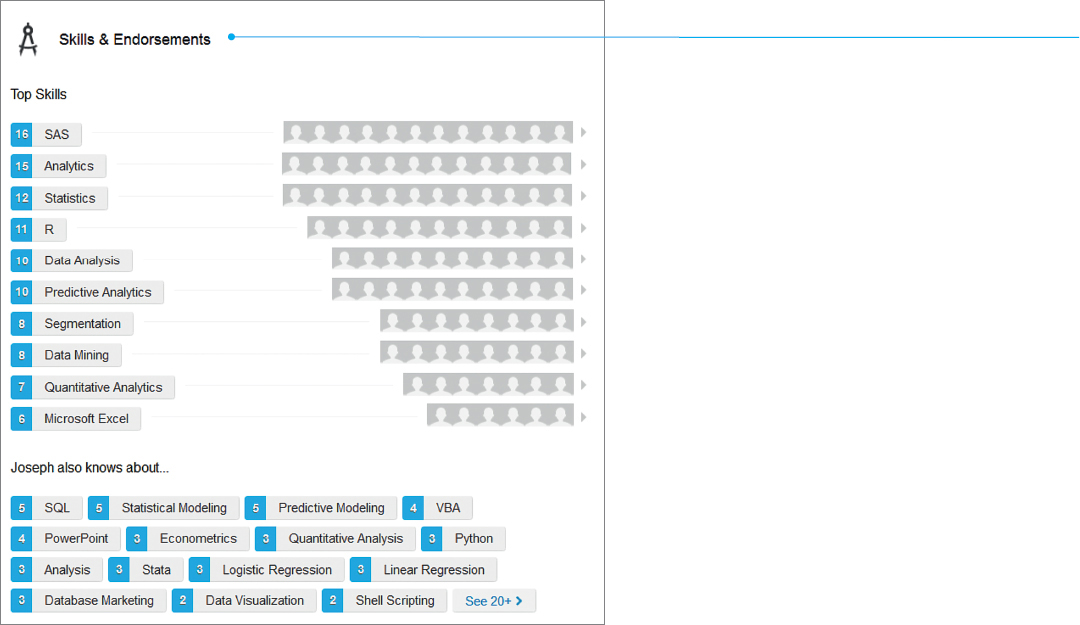Understanding Four Major Ways To Look for a Position
Printed Page 393-396
Understanding Four Major Ways To Look for a Position
Once you have done your planning, you can start to look for a position. There are four major ways to find a job.
- Through an organization’s website. Most organizations list their job offerings in a careers section on their websites and explain how to apply. If you are interested in a particular organization, start with its own site.
- Through a job board on the Internet. Job boards are sites sponsored by federal agencies, Internet service providers, and private organizations. Some sites merely list positions; you respond to such listings by email. Other sites let you upload your résumé electronically, so that employers can get in touch with you. Some job boards offer resources on how to prepare job-application materials; others do not. Among the biggest job boards are the following:
- — AfterCollege
- — CareerBuilder
- — CareerMag
- — CareerOneStop (sponsored by the U.S. Department of Labor)
- — Indeed.com (a metasearch engine for job seekers)
- — Monster
One caution about using job boards: once you upload your résumé to an Internet site, you probably have lost control of it. Here are four questions to consider before you post to a job board:
- — Who has access to your résumé? You might want to remove your home address and phone number from it if anyone can view it.
- — How will you know if an employer requests your résumé? Will you be notified by the job board?
- — Can your current employer see your résumé? If your employer discovers that you are looking for a new job, your current position could be in jeopardy.
- — Can you update your résumé at no cost? Some job boards charge you each time you update your résumé.
- Through your network. A relative or an acquaintance can exert influence to help you get a job, or at least point out a new position. Other good contacts include past employers and professors. Also consider becoming active in the student chapter of a professional organization in your field, through which you can meet professionals in your local area. Many people use Twitter, Facebook, and—in particular—LinkedIn to connect with their contacts, as well as to try to identify hiring officers and other professionals who can help them apply. Figure 15.2 shows an excerpt from one professional’s LinkedIn profile.
Everything in this excerpt from Joseph Cauteruccio’s LinkedIn profile makes the argument that he is talented, hard-working, and ambitious.
Although the photograph was not taken by a professional, Joseph dressed professionally and looks as if he’s eager to get into the office and get to work.
The summary statement includes a paragraph describing his major responsibilities and a summary of his educational credentials. Note that Joseph also includes a number of keywords categorized under “Specialties” and “Programming Languages.” These keywords will help potential employers locate his profile more easily.
 Figure 15.2 Excerpts from a Professional’s LinkedIn ProfileReprinted by permission of Joseph Cauteruccio. Image Credit: © 2014 Macmillan, Photo by Regina Tavani.
Figure 15.2 Excerpts from a Professional’s LinkedIn ProfileReprinted by permission of Joseph Cauteruccio. Image Credit: © 2014 Macmillan, Photo by Regina Tavani.The description of Joseph’s current position is unusually full, with details about his managerial responsibilities, specific types of projects he’s completed, and methodologies he’s employed to do so. All of this detail not only increases his chances of attracting potential employers but also makes clear that he loves his job and has energy to burn. You get the clear impression he’ll be the first one in the office in the morning and the last one to leave at night.

Joseph also listed a number of specific skills in the “Skills & Endorsements” section of his profile. Many LinkedIn users have endorsed his skills, not only affirming Joseph’s abilities but also suggesting that he is an active LinkedIn user who probably endorses his colleagues, as is appropriate, in return.
Joseph also follows a number of LinkedIn influencers and companies within his industry, signaling to potential employers his dedication to his field and desire to grow professionally.

- Through a college or university placement office or professional placement bureau. College and university placement offices bring companies and students together. Student résumés are made available to representatives of business, government, and industry, who arrange on-campus interviews. Students who do well in the campus interviews are then invited by the representatives to visit the organization for a tour and another interview. A professional placement bureau offers essentially the same service but charges a fee (payable by either the employer or the person who is hired for a job). Placement bureaus cater primarily to more-advanced professionals who are changing jobs.
Using LinkedIn’s Employment Features

In 2013, 77 percent of employers used social media to recruit. Among those employers, 94 percent said they used LinkedIn (Society for Human Resource Management, 2013). The following five guidelines can help you take advantage of the employment features on the world’s most influential networking site for professionals.
- Use the profile section fully. The profile section includes information from your résumé, but unlike a résumé, which needs to be concise and contains only words, the profile section can include any kind of digital file, such as presentation slides or videos. Describe your education and professional jobs in detail; remember that the keywords in your descriptions will enable potential employers to find you as they search for employees. If you add “skills” to your profile, others have an opportunity to “endorse” those skills, adding credibility to your profile.
- Include a picture. A picture increases by sevenfold the chances that a reader will read your profile (Halzack, 2013).
- Post updates. Post information about interesting articles you have read, conferences you are attending, and other professional activities. Be generous in praising co-workers and others you follow on the Internet. Mention your volunteer activities. Nicole Williams, a career expert at LinkedIn, writes that posting an update once a week makes you 10 times more likely to have your profile viewed by a hiring manager (Halzack, 2013).
- Write unique invitation requests. You can ask one of your connections to introduce you to someone who is not one of your connections. In doing so, explain why you want to be introduced (“I plan to relocate to Bill’s city later this year and want to describe the services I offer”), give your connection the opportunity to say no gracefully (“Would you be willing to help me make this introduction? If not, I understand”), and thank your connection (“I really appreciate your taking the time to consider my request”).
- Write unique invitations to connect. When you want to connect with another LinkedIn member, especially one whom you do not know well in person, avoid the template invitation, “I’d like to add you to my professional network.” Explain how you know the other person: “As a fellow Aggie who’s admired your company’s strategy for some time, I’d like to connect.”